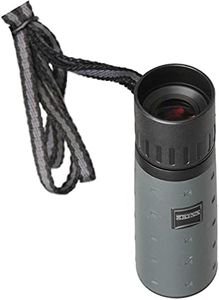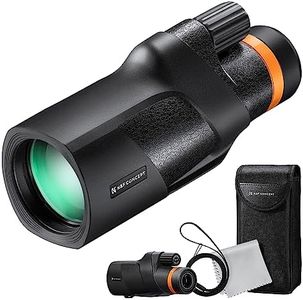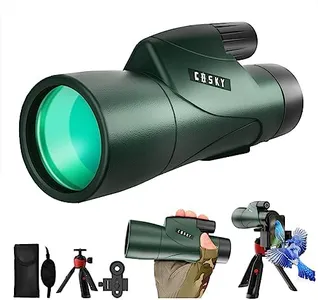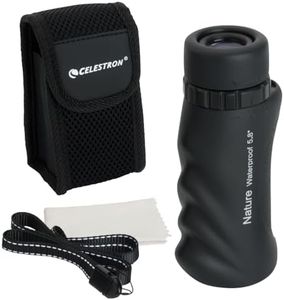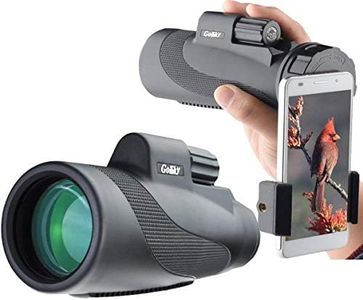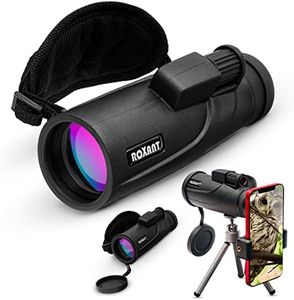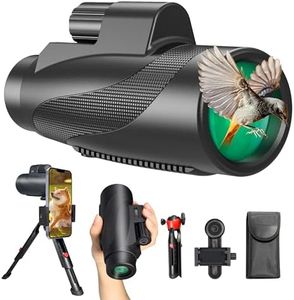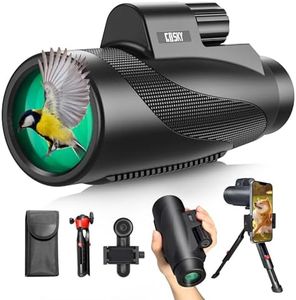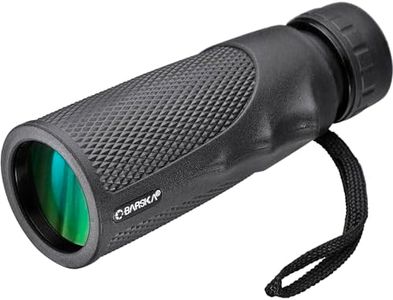We Use CookiesWe use cookies to enhance the security, performance,
functionality and for analytical and promotional activities. By continuing to browse this site you
are agreeing to our privacy policy
10 Best High Power Monocular
From leading brands and best sellers available on the web.Buying Guide for the Best High Power Monocular
Choosing a high-power monocular can be exciting and a bit overwhelming, given the wide range of options available. It's important to understand what your main use will be—such as birdwatching, hiking, sightseeing, or stargazing—because different activities have different requirements. The right monocular should fit comfortably in your hand, be easy to carry, and give you the viewing experience you want without unnecessary features. Understanding the key specifications can help you pick the best monocular for your needs.MagnificationMagnification tells you how much closer objects appear compared to the naked eye. For example, an 8x monocular makes things look eight times closer. Lower magnification (like 6x to 8x) gives a steadier image and a wider view—good for scanning landscapes or catching moving animals. Higher magnifications (like 10x or above) bring objects much closer but can make the image shakier and narrower—better for seeing details at a distance. Think about how steady your hands are and how far you'll usually be looking. For general use or walking around, moderate magnification is easier to manage. For specialized, distant viewing, higher power could be best.
Objective Lens DiameterThe objective lens is the large lens at the end of the monocular, measured in millimeters. A bigger lens (like 40mm or 50mm) gathers more light, which makes images brighter and clearer, especially in low light conditions. However, bigger lenses also make the monocular larger and heavier. Smaller lenses (around 25mm to 32mm) are lighter and more portable but may not be as bright, especially at dusk or dawn. If you need something for daytime, a smaller lens is fine; but if you expect to use it in dim light or want the sharpest view, consider a larger lens.
Field of ViewField of view tells you how wide an area you can see through the monocular, usually measured in feet at 1,000 yards or meters at 1,000 meters. A wider field of view lets you see more of the scene at once, which is great for following birds or scanning large landscapes. Narrower fields of view bring in less area but more detail. If you need to spot and follow moving things, look for a wide field of view. For focusing closely on distant objects, a narrower view is acceptable.
Close Focus DistanceClose focus is the shortest distance at which the monocular can still bring an object into clear view. Some monoculars can focus as close as a few feet, and others only at much greater distances. If you want to look at things nearby, like insects or flowers, look for a short close focus. For general outdoor use or looking at distant objects, this is less important.
Prism TypeMonoculars use prisms inside to direct light correctly and make the image upright. The two main types are Roof prisms and Porro prisms. Roof prisms make the monocular slim and straight, which is easier to carry, while Porro prisms tend to be bulkier but can offer wider views and sometimes brighter images at a lower cost. Choose roof prisms for compactness or porro prisms if you want a bigger view and don't mind a bit of extra size.
Waterproof and FogproofMany monoculars are labeled waterproof and fogproof, which means they can handle rain and quick changes in temperature without getting water or condensation inside. If you expect to use yours in the outdoors or in challenging weather, these features can be very important for keeping your view clear. If most of your use will be indoors or in good weather, this is less of a concern.
Eye ReliefEye relief measures how far your eye can be from the eyepiece and still see the whole view. This is especially important if you wear glasses—look for longer eye relief of 14mm or more. Without glasses, shorter eye relief may be just fine. Making sure the eye relief matches your needs will make the monocular more comfortable to use for long periods.
